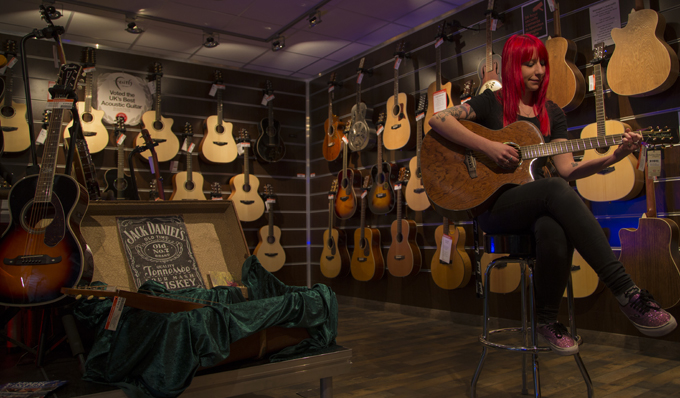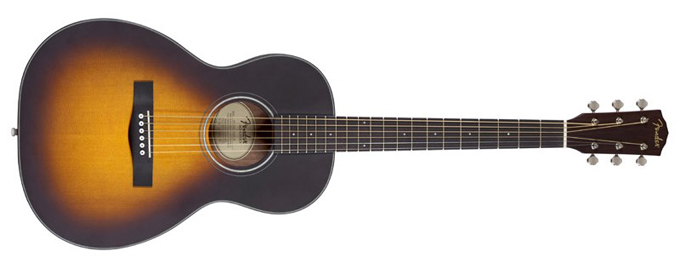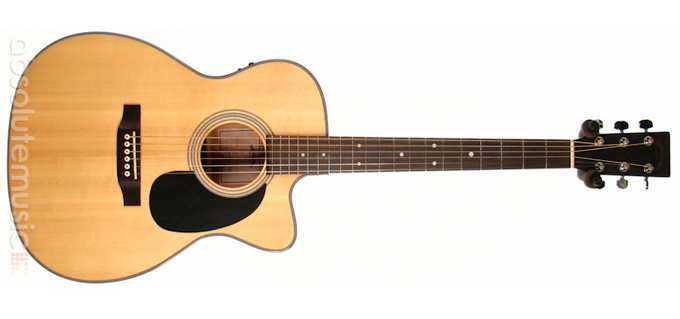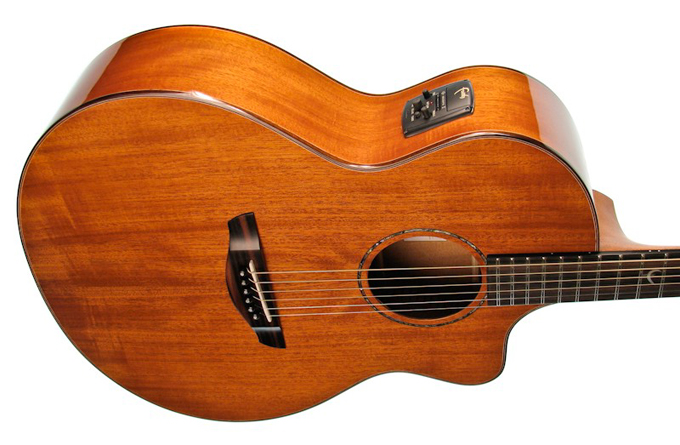Choosing an Acoustic Guitar
Posted on Mon 10 April 2017 in entries

If you are considering buying an Acoustic Guitar, or you just need to read up on the differences between the various woods and sizes, have a read of this article where our Head of Guitars, Terry Haselden, runs us through the ins and outs of what makes a great acoustic guitar.
From the powerful ‘spr-wiang’ of Tom Petty’s 12-string in Free Falling to the delicate finger-picking of Paul McCartney’s Blackbird and the beautiful classical guitar of Andrés Segovia, the acoustic guitar in all its incarnations is an absolute staple in music. There’s something special about playing an acoustic guitar. Even when you’re on stage in front of thousands (I have to admit, I’m not speaking from experience here!), when it’s just you and a guitar – no amp stacks, no noisy drummer – it gives such a special feeling to the player and to those listening.
So you’ve decided you want to buy your first acoustic guitar or perhaps you’re adding to an already existing collection, but where do you even begin in a minefield of models, sizes, shapes, brands, woods and colours? Well, hopefully once you’ve read this article, you will have a little more idea about what you should be looking for…
THE ORDER OF THREE
The first thing to take into consideration with your acoustic guitar is how it’s constructed. Basically speaking, there are three types of build style (and therefore quality) of acoustic guitar: laminated (the musician’s term for plywood), solid top (usually with laminated back and sides) and all wood or all solid.

The Fender CP-100 Parlor Acoustic Guitar has a laminated spruce top.
You will find that most acoustic guitars priced under £125 slot into the ‘laminated’ category, meaning that they have been built for durability and strength rather than musical tone. However, the good news is that the build quality of cheaper acoustic guitars is considerably higher than it was 15-20 years ago, with modern computer-programmed machines completely eradicating the ‘human error’ factor.
At this price point, there’s little point seeking out different wood types, as whatever wood it is will be made up of thin layers glued together, giving a stiff body that offers very little flexibility and minimum ‘breathe’ as the strings are played. That said, if you are just entering the world of acoustic guitars, these budget instruments are a fantastic place to start.
SOLID ON TOP
The step up from this level sees guitars built with a solid top, but laminated back and sides. These types of acoustic guitar usually fit within the price range from £150 to around £500. Because the top face of the guitar is made from a solid piece of wood, albeit a thin one, it is much more flexible and resonates more as you pluck and strum the strings. For this reason they tend to give a more ‘musical’ tone.
You will find that around 95% of solid-top guitar tops are made of spruce of some kind. Thanks to the relative softness of spruce wood (think Christmas trees), a spruce top will make the notes appear more defined but with a degree of smoothness that you simply don’t get from a laminated top guitar. This is all thanks to the flexibility of the spruce, resonating in tune with the soundwaves from the strings.

The Sigma 000MC-1STE has a Solid Sitka Spruce Top
Most solid-top (and all-solid) guitars have back and sides made from tonewood, although you’ll also see many solid-top guitars being offered with laminated mahogany or rosewood back and sides. At this level of guitar construction, the choice of wood actually does make a difference to how the guitar sounds. Mahogany generally gives the guitar sound a good projection with a well-defined mid-range tone, whereas rosewood should give your guitar a slightly warmer, bassier sound, with a subtly increased depth of tone.
In other words, guitars with rosewood back and sides don’t sound as ‘tight’ as those with mahogany back and sides, although which one you prefer will depend on your own individual taste.
TOTALLY SO SOLID CREW
Finally you get to the pinnacle of guitar construction and that is an all-solid acoustic guitar. At this level, your guitar’s top, back and sides are all made from completely solid pieces of wood, and generally speaking this will give it a better tone, more sustain and usually a fuller overall sound. Obviously, these guitars tend to be the most expensive, and prices can even rise to around the £3,000 mark!

The Faith FNCEMG, Mahogany Series Neptune Baby Jumbo has an All Solid Wood Construction
At this level, the choice of wood is absolutely crucial as it can have a marked effect on the overall tone. Obviously at this price I’d recommend listening to a guitar before making a purchase, but all the same, here is a breakdown of what sort of character you can expect from each type of wood…
Tops: The majority of all-solid guitars will have tops constructed of spruce, giving you the flexibility and warm tone I mentioned earlier. You will find some all-solid guitars with cedar tops, and this gives the guitar a warmer quality, also giving a bit less ‘cut’ to the overall sound.
Back & sides: All-solid guitars usually have back and sides made from mahogany, rosewood or maple. Rosewood tends to give the warmest, fullest tone; mahogany gives a tighter, punchier sound with good volume and projection; and maple offers a crisper, brighter tone, with less of the bass response or warmth of rosewood or mahogany.
Rarer or interestingly patterned woods can often be found on special limited editions or on guitars made by small independent companies. More unusual woods to look out for include koa, walnut, Tasmanian blackwood, sapelle and redwood, all of which exhibit defined timbres, allowing you to select which sound suits you best. Nowadays there are many possible combinations of woods available, so, as I’ve already mentioned, it is best to get out there and have a listen for yourself!
BODY TALK
So we’ve covered material, but that isn’t the end of the story, as acoustic guitars also offer many body shapes and sizes. They generally rise in size from parlour, concert, folk, grand concert and orchestral to grand auditorium, dreadnought, jumbo and super jumbo. Naturally, the smaller models are more popular for playing at home as they’re easier to sit and hold, and they offer a more intimate tone compared to the larger jumbo models.
Try out a few sizes before you buy… you may have your heart set on a Gibson Super Jumbo but find that after a few minutes of strumming you’ve cricked your neck and got cramp up your arm!
One final thing: the kind of strings you choose can make a huge difference to your acoustic sound, so take advice from our guitar team on whether to go nylon, steel, wound or mixed… and enjoy!
Things to look for when buying an acoustic guitar:
- Construction: Laminate Top, Solid Top or All-Solid
- Back and sides wood: Mahogany, Rosewood or Maple
- Sizes: Parlour, Concert, Folk, Grand Concert Grand Auditorium, Dreadnought, Jumbo or Super Jumbo
- Strings: Nylon, Steel, Wound or Mixed
- Projection: Electro-acoustic or pure acoustic